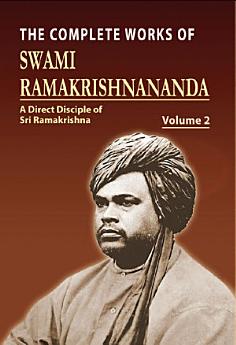The Complete Works of Swami Ramakrishnananda Volume - 2
About this ebook
About the author
Ramakrishnananda was born as Shashi Bhushan Chakravarty on 13 July 1863. His father Ishwara Chandra Chakravarty was an expert in ritualistic worship, and Shashi imbibed from him love for ritualistic worship. After passing out of the village school, he went to Kolkata and lived with his cousin Sharat (later, Swami Saradananda) for higher education. A brilliant student, he chose mathematics for the B.A. course, which, however, he could not complete owing to the terminal illness of Ramakrishna at Cossipore. While studying in a Calcutta college, Shashi and Sharat joined the Brahmo Samaj, and heard about Ramakrishna from Keshab Chandra Sen himself. In October 1883 they visited Dakshineswar and were deeply attracted to Ramakrishna, who used to say that Shashi and Sharat had been the followers of Jesus Christ in their previous birth. Shashi distinguished himself most by the self-sacrificing spirit and devotion with which he served Ramakrishna during his last illness at Shyampukur and Cossipore. After the Master's passing he joined the Baranagar Math and underwent sannyasa ordination, assuming the name Ramakrishnananda. He took charge of the worship of the Atmaramer kauta, the urn containing the relics of Ramakrishna in the Math's shrine. He felt the living presence of the Master, and so his worship was not a mere ritual but loving service to a living God. It was Swami Ramakrishnananda who formulated and introduced the system of daily ritualistic worship to Ramakrishna that is followed in the Ramakrishna Movement. He seldom went out on pilgrimage, and devoted himself to daily worship at the Math. But when Vivekananda, after his return from the West, asked him to go to Madras (presently called Chennai) and open a branch centre of Ramakrishna Math there, he obeyed without any hesitation. The saga of sacrifice and hardship that he underwent in preaching the message of Ramakrishna and Vivekananda for 14 years under unfavourable conditions has been recorded in letters of gold in the annals of the Ramakrishna Movement. In the South he travelled extensively. The starting of centres in Trivandrum, Mysore, Bangalore and Mumbai owed much to his pioneering efforts. His last and the greatest accomplishment was to arrange for the visit of Sarada Devi to South India in 1911 which event gave great impetus to the growth of Ramakrishna Movement all over India and South India in particular. He introduced his colleague Swami Nirmalananda to friends of Ramakrishna Mission in South India, especially those in Bangalore and Kerala, which led to Nirmalananda taking up the mantle and continuing till 1938 in expanding the works started by Ramakrishnananda. Incessant work, especially his service to Sarada Devi during her travels in the South, told upon his health, and he contracted tuberculosis. He spent some weeks in Bangalore with a hope of getting better in the salubrious climate there under the care of his brother disciple Nirmalananda. But since the deterioration continued he was sent to Calcutta (presently called Kolkata) He breathed his last in a state of ecstasy on 21 August 1911







